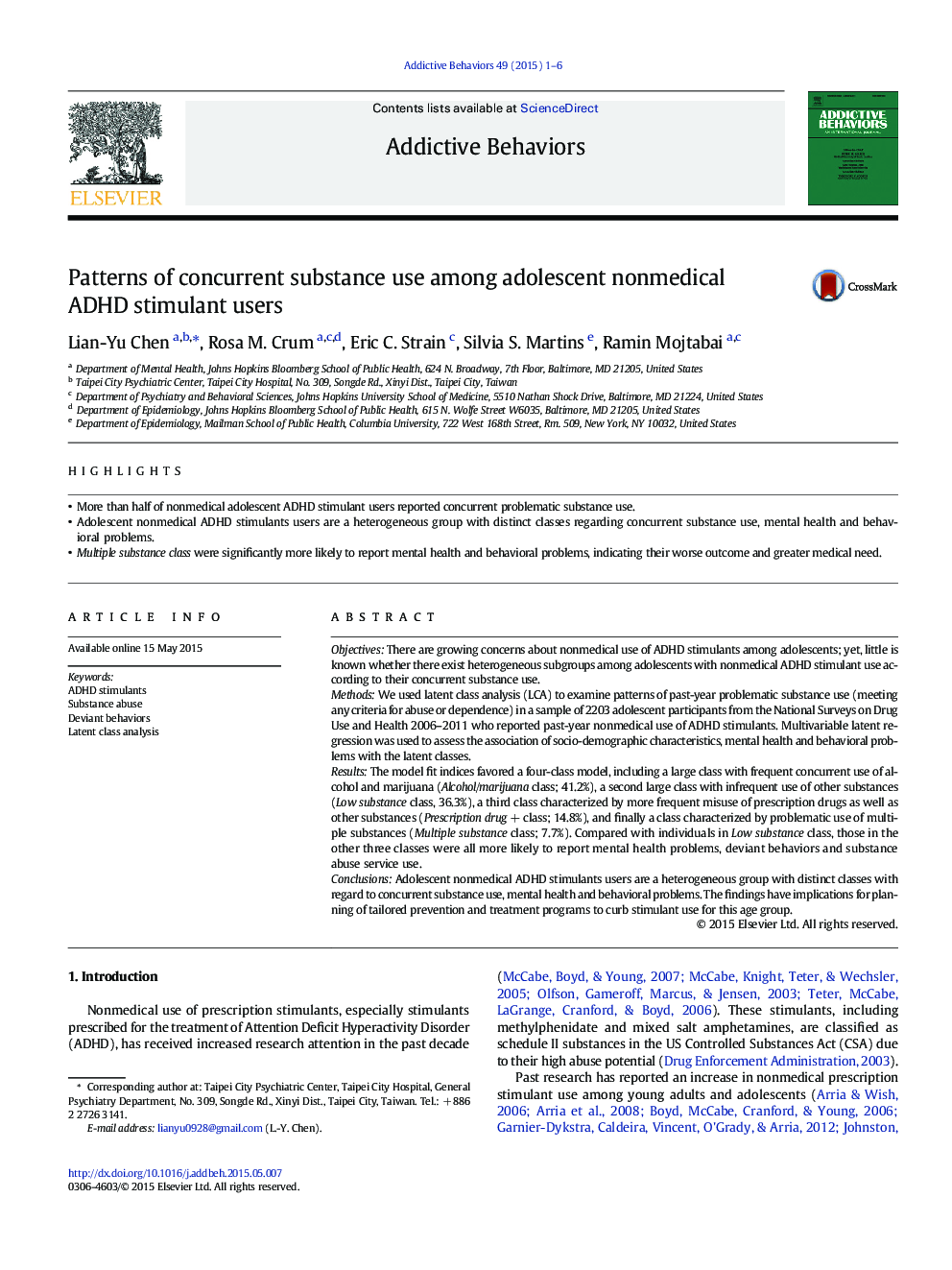| کد مقاله | کد نشریه | سال انتشار | مقاله انگلیسی | نسخه تمام متن |
|---|---|---|---|---|
| 898682 | 1472522 | 2015 | 6 صفحه PDF | دانلود رایگان |

• More than half of nonmedical adolescent ADHD stimulant users reported concurrent problematic substance use.
• Adolescent nonmedical ADHD stimulants users are a heterogeneous group with distinct classes regarding concurrent substance use, mental health and behavioral problems.
• Multiple substance class were significantly more likely to report mental health and behavioral problems, indicating their worse outcome and greater medical need.
ObjectivesThere are growing concerns about nonmedical use of ADHD stimulants among adolescents; yet, little is known whether there exist heterogeneous subgroups among adolescents with nonmedical ADHD stimulant use according to their concurrent substance use.MethodsWe used latent class analysis (LCA) to examine patterns of past-year problematic substance use (meeting any criteria for abuse or dependence) in a sample of 2203 adolescent participants from the National Surveys on Drug Use and Health 2006–2011 who reported past-year nonmedical use of ADHD stimulants. Multivariable latent regression was used to assess the association of socio-demographic characteristics, mental health and behavioral problems with the latent classes.ResultsThe model fit indices favored a four-class model, including a large class with frequent concurrent use of alcohol and marijuana (Alcohol/marijuana class; 41.2%), a second large class with infrequent use of other substances (Low substance class, 36.3%), a third class characterized by more frequent misuse of prescription drugs as well as other substances (Prescription drug + class; 14.8%), and finally a class characterized by problematic use of multiple substances (Multiple substance class; 7.7%). Compared with individuals in Low substance class, those in the other three classes were all more likely to report mental health problems, deviant behaviors and substance abuse service use.ConclusionsAdolescent nonmedical ADHD stimulants users are a heterogeneous group with distinct classes with regard to concurrent substance use, mental health and behavioral problems. The findings have implications for planning of tailored prevention and treatment programs to curb stimulant use for this age group.
Journal: Addictive Behaviors - Volume 49, October 2015, Pages 1–6